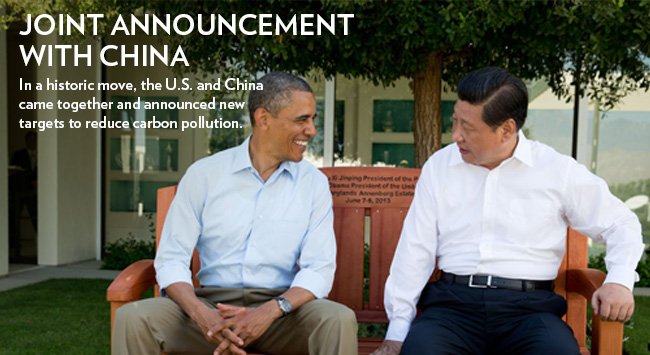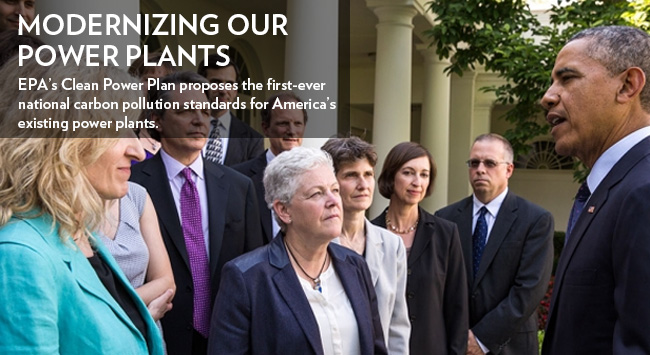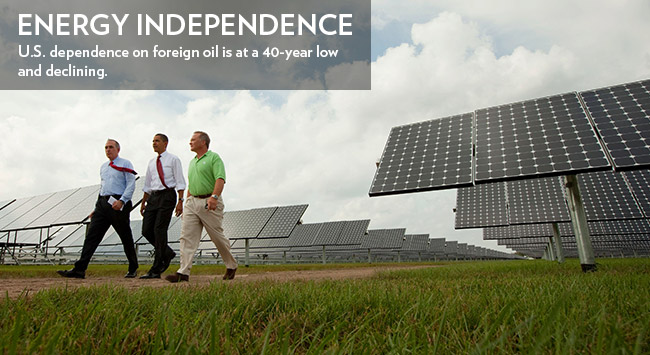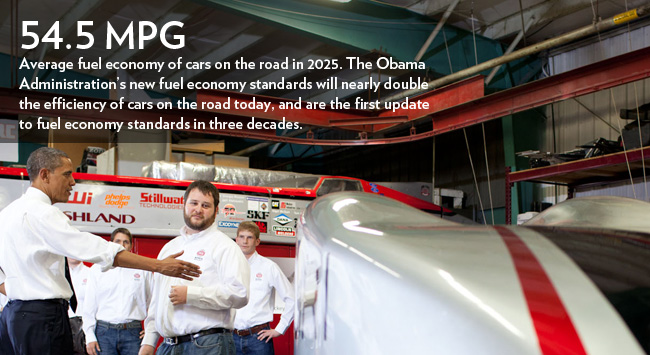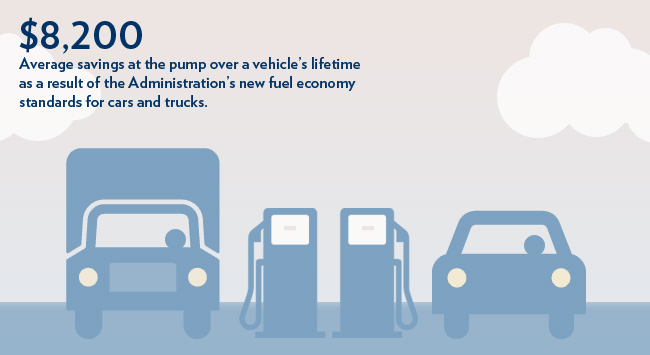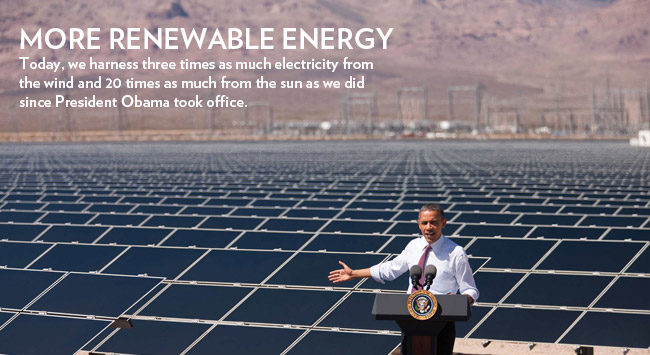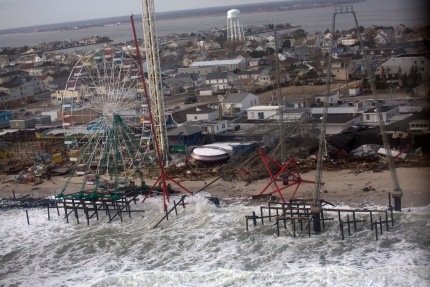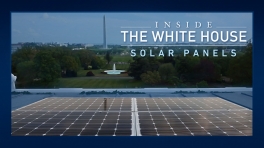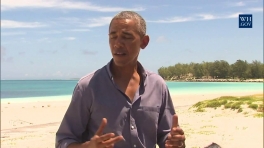Energy and Environment Latest News
Let’s Get Every Kid in a Park
Posted by on February 19, 2015 at 2:36 PM EDT
From sea to shining sea, our country is home to gorgeous landscapes, vibrant waterways, and historic treasures that all Americans can enjoy. But right now, young people are spending more time in front of screens than outside, and that means they are missing out on valuable opportunities to explore, learn, and play in the spectacular outdoor places that belong to all of them.
President Obama is committed to giving every kid the chance to explore America’s great outdoors and unique history. That’s why today he launched the Every Kid in a Park initiative, which calls on each of our agencies to help get all children to visit and enjoy the outdoors and inspire a new generation of Americans to experience their country’s unrivaled public lands and waters. Starting in September, every fourth-grader in the nation will receive an “Every Kid in a Park” pass that’s good for free admission to all of America’s federal lands and waters -- for them and their families -- for a full year.
Learn more about Education, Energy and EnvironmentSatellite Launches with Mission to Monitor Space Weather
Posted by on February 11, 2015 at 4:28 PM EDTWe know too well that weather on Earth can affect our daily lives. But what about weather in space? Solar flares, geomagnetic storms, and other types of space weather have the potential to disrupt a range of critical infrastructure, including telecommunications, power grids, and GPS applications. Such disruptions could pose significant threats to our safety, security, and economy.
That’s why last night’s launch of the Deep Space Climate Observatory (DSCOVR), a NOAA satellite, is so important. An assessment requested by the White House Office of Science and Technology Policy identified DSCOVR as the best option for meeting the Nation’s real-time solar wind monitoring needs. DSCOVR is the result of collaboration by three Federal agencies – NOAA, NASA, and the Air Force. From its perch a million miles away from us on Earth, it will enhance our Nation's ability to plan for and respond to the hazards associated with space weather.
Learn more about Energy and EnvironmentIncreasing Investment in Clean Energy Technologies
Posted by on February 10, 2015 at 1:00 PM EDTOver the last several years, we have seen the potential for clean energy and economic growth to go hand in hand. Today, we produce more wind and solar energy than ever before, while our economy is creating jobs at the fastest pace since 1998. According to industry analyses, employment in the solar industry has grown more than 85 percent since 2010, while the price of a rooftop solar system has dropped more than 50 percent.
We have to keep at it — because promoting clean energy innovation will help grow the economy while taking decisive action on climate change.
That is why, today, I was proud to announce a new Clean Energy Investment Initiative at the Department of Energy ARPA-E Summit. Through the Initiative, the Administration seeks to catalyze $2 billion of expanded private-sector investment in solutions to climate change, including innovative technologies with breakthrough potential to reduce carbon pollution. By leveraging the tools and capabilities of the federal government, this new Initiative will increase investment in clean energy technologies.
Learn more about Energy and EnvironmentThe President’s Science Advisor Answers Your Climate Questions
Posted by on February 9, 2015 at 1:06 PM EDTSince last November, Dr. John Holdren -- the President's science advisor -- has been encouraging the public to ask him anything about climate change on social media using the hashtag #AskDrH. In his first set of answers, he covered a lot of ground -- the connection between climate change and extreme weather, temperature trends, how we know that climate change is human-cased, and more.
Today, Dr. H is answering more of your questions -- this time from students and classrooms across the country.
Learn more about Energy and Environment2016 Budget Highlights President's Commitment to Conservation
Posted by on February 2, 2015 at 1:07 PM EDT“We are blessed to have the most beautiful landscapes in the world. We have a responsibility to be good stewards of those landscapes for future generations.”
–President Obama, October 10, 2014
President Obama is committed to protecting the air we breathe, the water we drink, and the outdoor spaces we love. That’s why, as he noted in his State of the Union address this year, the Obama Administration has protected more public lands and waters than any administration in history. His Budget Request for Fiscal Year 2016, released today reinforces those commitments, supporting key measures focused on conserving America’s bountiful natural resources and ensuring that all Americans can enjoy them – now and in the future.
That means ensuring that our wondrous national parks are upgraded and maintained to last another century and more. Nothing better captures America’s natural beauty than places like the Grand Canyon, Yellowstone, or Yosemite. That’s why, to mark the 100th birthday of the National Park Service, the budget invests $859 million (including $300 million in mandatory funds) in 2016 to allow NPS over the next 10 years for restoring and maintaining key park facilities like visitor centers, trails and historic structures at our greatest historical, cultural, and national treasures. The National Park Centennial Initiative will also leverage private donations, increase volunteer opportunities in parks and get more young people exploring our public lands and waters.
All Americans deserve the chance to enjoy the outdoors, even if they can’t get to a national park. That’s one of the reasons the President has been steadfast in his support for the Land and Water Conservation Fund (LWCF), a program that has benefited communities in every county in the country over its 50 year history. The Fund reinvests revenues from offshore oil and gas development to support LWCF programs that enhance existing parks, conserve treasured landscapes, preserve historic sites like Civil War battlefields, and open land for all sorts of public uses – from hunting, fishing and hiking to establishing much-needed parks in urban areas. President Obama has advocated for consistent and reliable funding for LWCF programs, and his Budget proposes full funding of LWCF at $900 million annually – the amount equal to the oil and gas receipts that Congress long ago directed be deposited in the Fund to support these important public programs.
As the President continues to expand opportunities for Americans to enjoy the outdoors, he recognizes the need to protect the health of our lands and waters. And that’s impossible without addressing the global threat of climate change. His budget keeps us on a path to take aggressive action to curb carbon pollution and prepare communities for the impacts of climate change. It invests in programs to reduce greenhouse gas emissions from conventional energy development and invests roughly $100 million at the Interior Department to support renewable energy development on our public lands and waters. It also supports steps to strengthen our natural resources in the context of a changing climate. For example, the budget treats suppression of the most severe fire activity the same as we treat other natural disasters. The fix would provide funding certainty in future years for firefighting costs and allow us to invest in programs that will more effectively promote fire risk reduction and long-term forest and rangeland health and preservation.
The budget includes increased support for other measures to strengthen our natural resources and protect our lands and waters. Here are just a few more:
- Restoring Iconic Ecosystems: The budget follows through on the President’s commitment to restore our nation’s most important watersheds and ecosystems. Building on the Obama Administration’s record investment of more than $1.6 billion in the Everglades, the budget proposes $240 million to continue restoration efforts. It also includes $250 million for the Great Lakes Restoration Initiative, $70 million to meet pollution reduction goals in the Chesapeake Bay, and investments in the Gulf Coast and Puget Sound.
- Supporting Private Landowners: No one understands the value of our forests and working lands better than the landowners who earn their livelihood from them. The President is committed to supporting these stewards, and his budget seeks to make the conservation easement tax deduction permanent, so farmers and ranchers have options to get the support they need and the lands they work aren’t converted for other uses. The Budget also provides $1.35 billion to help private landowners and agricultural producers implement a wide range of conservation practices.
- Advancing Science and Tools: The budget also increases funding to advance science and develop tools to strengthen our natural resources. That includes $108 million for research related to the role of our lands and forests as carbon sinks, $30 million to expand NOAA’s ocean acidification research program, and $415 million for the Department of the Interior’s important work to study climate variability and support resilience of our public lands and waters.
Mike Boots leads the White House Council on Environmental Quality. Ali Zaidi is the White House Office of Management and Budget Associate Director for Natural Resources, Energy, and Science.
Learn more about Energy and EnvironmentA New Flood Standard for Federal Investments Will Help Communities Weather Climate Change, Extreme Storms
Posted by on January 30, 2015 at 4:30 PM EDTWhen Hurricane Sandy hit New York City, the storm sent water cascading into the South Ferry subway station, pouring into the Brooklyn-Battery Tunnel, inundating neighborhoods from Staten Island to Queens. At Battery Park in lower Manhattan, water reached more than 9 feet above the average high-tide line.
One factor fueling the surge -- New York Harbor, where waters have risen about a foot since 1900. We know that rising sea levels, higher average temperatures, higher ocean temperatures, and other effects of climate change will make extreme weather events more frequent and more severe. And the climate is changing -- earlier this month, NASA and NOAA announced that 2014 was the hottest year on record globally, meaning that 14 of the 15 hottest years in recorded history have happened this century.
That’s why when we invested billions to help communities rebuild from Sandy, we also committed to “build back better” -- to rebuild infrastructure to a higher standard so it can withstand the increased risks posed by sea level rise and other climate impacts.
Today, the White House is building on that experience by releasing a new flood risk management standard for new and rebuilt federally funded structures in and around floodplains. This new resilience standard will help ensure taxpayer dollars are well spent on infrastructure that can better withstand the impacts of flooding.
Learn more about Energy and Environment
- &lsaquo previous
- …
- 14
- 15
- 16
- 17
- 18
- 19
- 20
- 21
- 22
- …
- next &rsaquo
White House Blogs
- The White House Blog
- Middle Class Task Force
- Council of Economic Advisers
- Council on Environmental Quality
- Council on Women and Girls
- Office of Intergovernmental Affairs
- Office of Management and Budget
- Office of Public Engagement
- Office of Science & Tech Policy
- Office of Urban Affairs
- Open Government
- Faith and Neighborhood Partnerships
- Social Innovation and Civic Participation
- US Trade Representative
- Office National Drug Control Policy
